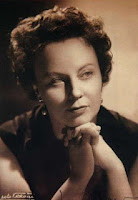Nazis free captive Mussolini
Extraordinary daring of Gran Sasso Raid
One of the most dramatic events of the Second World War in Italy took place on this day in 1943 when Benito Mussolini, the deposed and imprisoned Fascist dictator, was freed by the Germans. The former leader was being held in a remote mountain ski resort when 12 gliders, each carrying paratroopers and SS officers, landed on the mountainside and took control of the hotel where Mussolini was being held. They forced his guards to surrender before summoning a small aircraft to fly Mussolini to Rome, from where another plane flew him to Austria. Even Winston Churchill, Britain's wartime prime minister, professed his admiration for the daring nature of the daylight rescue. Known as the Gran Sasso Raid or Operation Oak, the rescue was ordered by Adolf Hitler himself after learning that Mussolini's government, in the shape of the Grand Fascist Council, had voted through a resolution that he be replaced as leader and that King Victor Emmanuel III had ensured that the resolution was successful by having the self-styled Duce arrested. The Italian government by then had decided defeat in the War was inevitable. Read more…
__________________________________________________________________
Daniela Rocca – actress
Tragic beauty shunned after breakdown
The actress Daniela Rocca, who starred in the hit big-screen comedy Divorce, Italian Style, was born on this day in 1937 in Sicily. The movie, in which she starred opposite Marcello Mastroianni, won an Academy Award for its writers and acclaim for former beauty queen Rocca, who revealed a notable acting talent. Yet this zenith in her short career would in some ways also prove to be its nadir after she fell in love with the director, Pietro Germi. The relationship she hoped for did not materialise and she subsequently suffered a mental breakdown, which had damaging consequences for her career and her life. Born in Acireale, a coastal city in eastern Sicily in the shadow of the Mount Etna volcano, Rocca came from poor, working class roots but her looks became a passport to a new life. She entered and won the Miss Catania beauty contest before she was 16. She subsequently entered Miss Italia, and although she did not win her looks made an impression on the movie talent scouts who took a close interest in such events, on the lookout for potential starlets. Rocca’s acting debut came in 1957 in the French director Maurice Cloche’s film Marchand de Filles. Read more…
________________________________________________________________
Lorenzo II de’ Medici – Duke of Urbino
Short rule of the grandson of Lorenzo Il Magnifico
Lorenzo di Piero de’ Medici, Duke of Urbino, was born on this day in 1492 in Florence. The grandson of Lorenzo the Magnificent, Lorenzo II ruled Florence from 1513 to 1519. Niccolò Machiavelli addressed his work, The Prince, to Lorenzo II, advising him to accomplish the unification of Italy under Florentine rule by arming the whole nation and expelling its foreign invaders. When Lorenzo was two years old, his father, who became known as Piero the Unfortunate, was driven out of Florence by Republicans with the help of the French. The Papal-led Holy League, aided by the Spanish, finally defeated the rebels in 1512 and the Medici family was restored to Florence. Lorenzo II’s uncle, Giuliano, ruled Florence for a year and then made way for his nephew. Another uncle, Pope Leo X, made Lorenzo the Duke of Urbino after expelling the legitimate ruler of the duchy, Francesco Maria della Rovere. When Francesco Maria returned to Urbino he was welcomed by his subjects. Lorenzo II regained possession of the duchy only after a protracted war in which he was wounded. In 1519 Lorenzo II died at the age of just 26 and the duchy reverted to the della Rovere family. Read more…
Home























